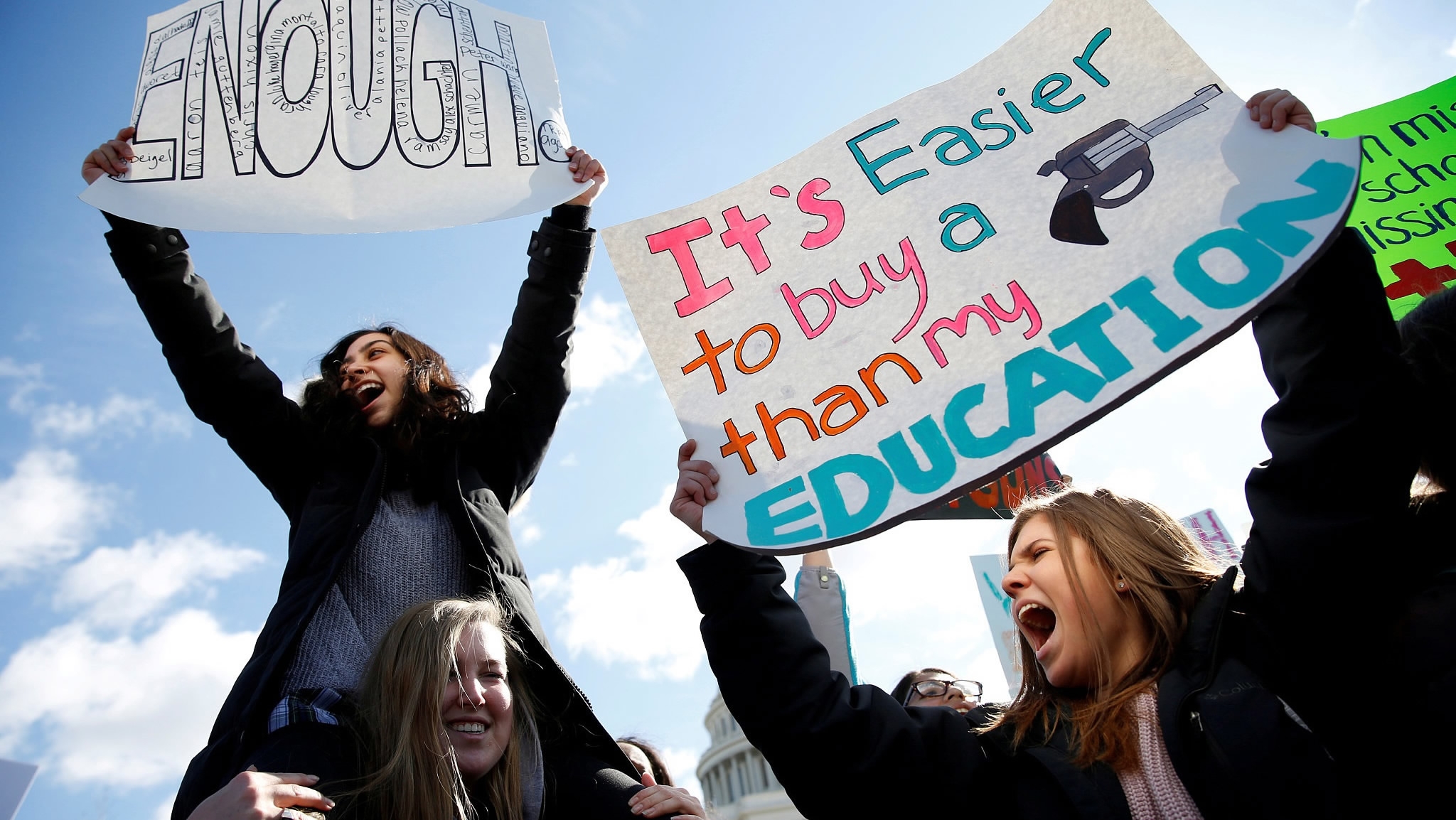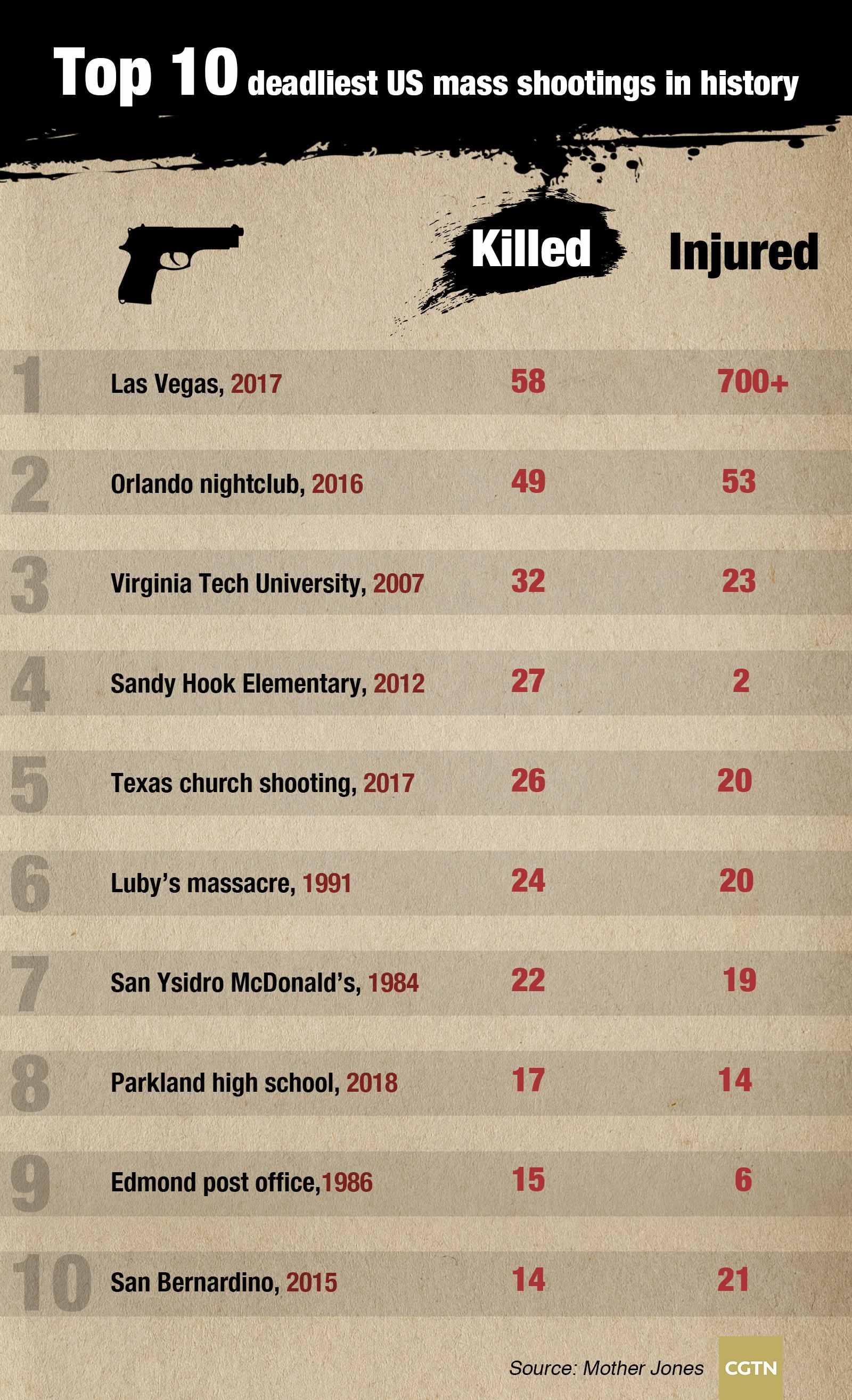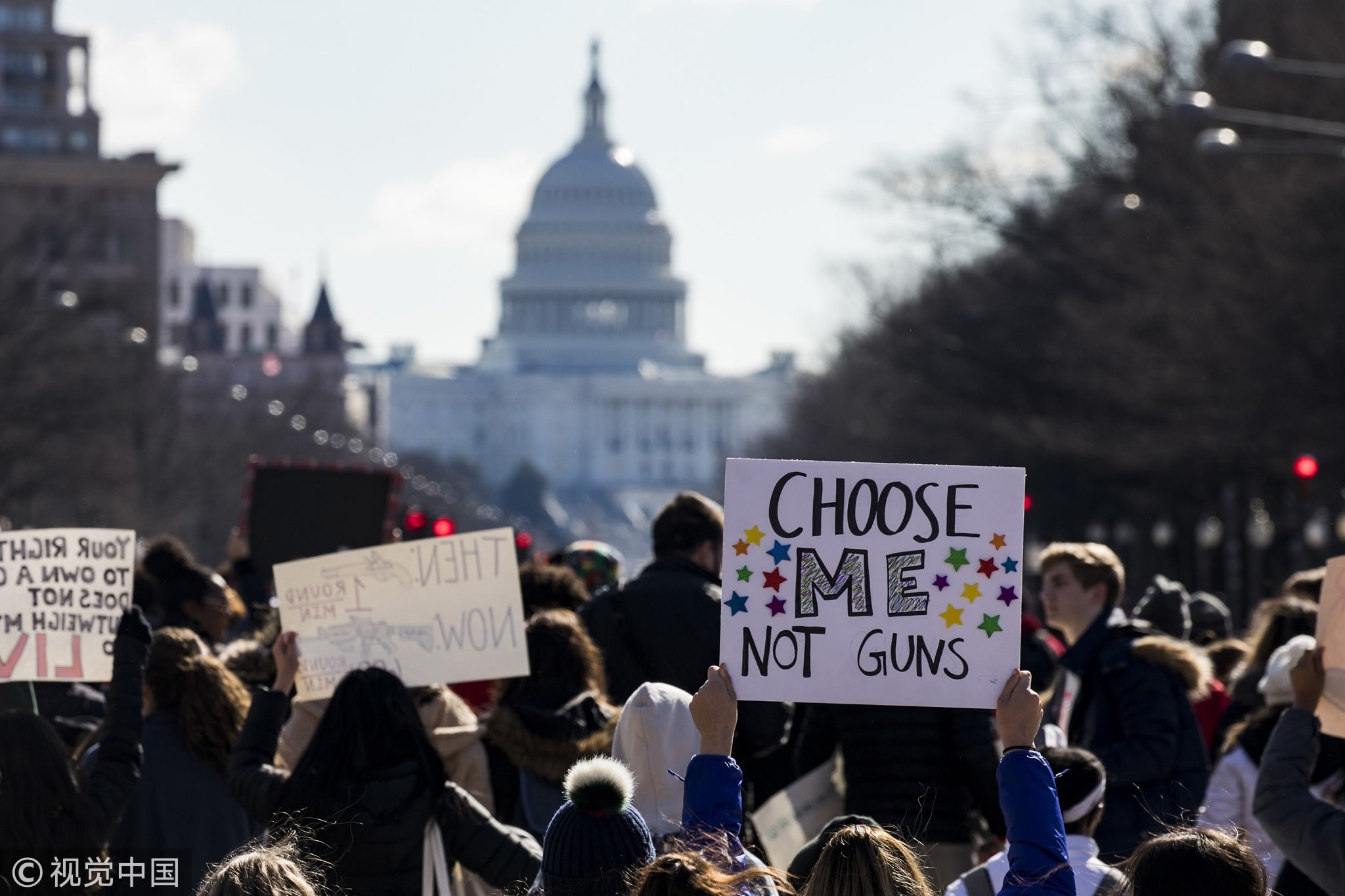
World
17:23, 24-Mar-2018
March for our Lives: What can it achieve?
By Sim Sim Wissgott

Anti-gun protests are planned around the US and worldwide on Saturday as high school students and their parents demand an end to gun violence and stricter gun control legislation.
The March for Our Lives was inspired by students from Marjory Stoneman Douglas high school in Parkland, Florida, after a gunman killed 17 people there last month.
The movement has since gained momentum and led to a series of rallies – including a National School Walkout on March 14 – calling on politicians to take action and revise lax gun laws in the US.
Here’s a quick look at what’s happening and why.

CGTN Graphic
CGTN Graphic
March for their Lives
In Washington, DC, and around the US, protesters will march on Saturday “to demand that their lives and safety become a priority and that we end gun violence and mass shootings in our schools today.”
Sister rallies are also planned around Europe and as far as Mozambique, India, Ghana, Vietnam and Brazil, to show support with the students and parents marching in the US.
In total, over 800 rallies have registered on the official website of March for Our Lives.
Mission Statement
We cannot allow one more child to be shot at school… We cannot allow one more family to wait for a call or text that never comes. Our schools are unsafe.
- Mission Statement - March for our Lives
March for Our Lives’ goal is “to demand that a comprehensive and effective bill be immediately brought before Congress to address these gun issues. No special interest group, no political agenda is more critical than timely passage of legislation to effectively address the gun violence issues that are rampant in our country.”
America’s gun problem
Mass shootings, most shockingly in schools but also in nightclubs, offices and concerts, have grown increasingly frequent in the US in recent years.

Thousands of students march along Pennsylvania Avenue towards the US Capitol to protest for greater gun control in Washington, United States, on March 14, 2018. /VCG Photo
Thousands of students march along Pennsylvania Avenue towards the US Capitol to protest for greater gun control in Washington, United States, on March 14, 2018. /VCG Photo
Six of the 10 deadliest shootings in US history took place in the last five years, according to the website Mother Jones, which has been compiling data going back to 1982.
So far in 2018, there have already been 49 mass shootings, defined as shootings where at least four people were shot or killed, according to the Gun Violence Archive.
Last year, the US saw 346 mass shootings in total.
Has legislation ever worked?
Advocates of gun control in the US often point to countries like Australia that saw a drop in gun violence after tough new laws were enacted.
There as well as in Germany, New Zealand and the UK, mass shootings prompted a call for action and authorities swiftly clamped down on gun ownership, imposing tougher rules on licenses, banning certain weapons outright and keeping tabs on others in circulation.

CGTN Graphic
CGTN Graphic
In the US, however, those in favor of stricter gun laws have come up against the all-powerful NRA gun lobby and its political allies, who point to the US Constitution to justify their right to bear arms.
The US is the world’s top gun-owning nation with 101 guns per 100 residents, according to Gunpolicy.org, a resource of the University of Sydney. Its closest competitor was Yemen with 54.8 firearms, according to the most recent figures, followed by Serbia, Montenegro, Cyprus, Saudi Arabia and Iraq.
Not only that, the US outstripped other Western countries when it came to homicide rates, with close to 45 gun homicides for every million people.
In countries like Canada, the UK, Germany and France, the rate was below five per million people, according to Gunpolicy.org data.
As of Saturday, 3,178 people had been killed by guns in the US this year alone, according to the Gun Violence Archive.
11159km

SITEMAP
Copyright © 2018 CGTN. Beijing ICP prepared NO.16065310-3
Copyright © 2018 CGTN. Beijing ICP prepared NO.16065310-3